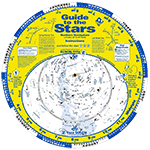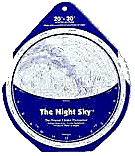|
1
|
Venus 1.2° South of Beehive Cluster (M44) at 4h UT (morning sky). Mag. −4.0.
|
|
7
|
Total Lunar Eclipse begins at 17:31 UT and ends at 18:53 UT. Greatest eclipse at 18:12 UT. Partial phases begin at 16:27 UT and end at 19:56 UT. During totality the Moon will appear red- orange in color (the Earth's shadow). This eclipse favors skywatchers in Europe, Africa, Asia and Australia.
• NASA Lunar Eclipses: 2021-2030 (NASA)
• Total Lunar Eclipse of 2025 September 7 (PDF) (NASA)
|
|
7
|
Full Moon at 18:09 UT.
|
|
8
|
Moon near Saturn at 18h UT (morning sky). Mag. 0.6.
|
|
10
|
Moon at perigee (closest to Earth) at 12:14 UT (distance 364,777km; angular size 32.8').
|
|
12
|
Moon near the Pleiades at 23h UT (morning sky).
|
|
13
|
Mercury at superior conjunction with the Sun at 11h UT (not visible). The innermost planet passes into the evening sky.
|
|
13
|
Mars 2.2° NNE of Spica at 17h UT (33° from Sun, evening sky). Mags. 1.6 and 1.0.
|
|
14
|
Last Quarter Moon at 10:34 UT.
|
|
15
|
Moon near M35 Cluster at 6h UT (morning sky).
|
|
16
|
Moon near Jupiter at 13h UT (morning sky). Mag. −2.1.
|
|
16
|
Moon near Castor at 13h UT (morning sky).
|
|
16
|
Moon near Pollux at 18h UT (morning sky).
|
|
17
|
Moon near Beehive Cluster (M44) at 20h UT (morning sky).
|
|
19
|
Moon, Venus and Regulus within 1.2° circle at 13h UT (27° from Sun, morning sky). Mags. −3.9 and 1.4.
|
|
21
|
Saturn at opposition (opposite the Sun) at 6h UT. The planet is at its closest and brightest. Mag. 0.6.
|
|
21
|
Partial Solar Eclipse at 19:42 UT (greatest eclipse). Visible from the South Pacific, New Zealand and Antarctica. Begins 17:30 UT. Ends 21:54 UT.
• NASA Solar Eclipses: 2021-2030 (NASA)
• Partial Solar Eclipse of 2025 September 21 (GIF) (NASA)
|
|
21
|
New Moon at 19:53 UT. Start of lunation 1271.
|
|
22
|
September equinox at 18:19 UT. The time when the Sun reaches the point along the ecliptic where it crosses into the southern celestial hemisphere marking the start of autumn in the Northern Hemisphere and spring in the Southern Hemisphere.
• Equinox (Wikipedia)
|
|
23
|
Neptune at opposition at 13h UT. Mag. 7.8.
|
|
23
|
Moon near Spica at 22h UT (evening sky).
|
|
24
|
Moon near Mars at 12h UT (evening sky). Mag. 1.6.
|
|
26
|
Moon at apogee (farthest from Earth) at 10h UT (distance 405,548km; angular size 29.5').
|
|
27
|
Moon near Antares at 16h UT (evening sky). Occultation visible from Antarctica and north-western French Southern Territories.
• Lunar occultation of Antares (In-The-Sky)
|
|
29
|
First Quarter Moon at 23:54 UT.
|
|
|
|
All times Universal Time (UT).
- US Eastern Daylight Time = UT − 4 hours.
- US Pacific Daylight Time = UT − 7 hours.
- Australian Eastern Standard Time = UT + 10 hours
- Singapore Standard Time = UT + 8 hours.
|







